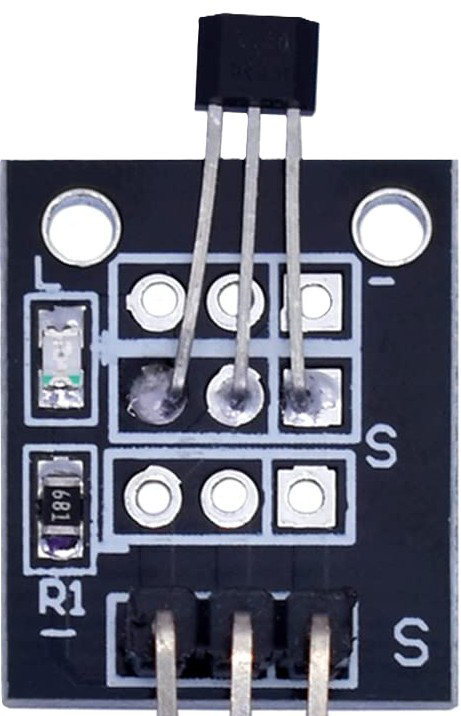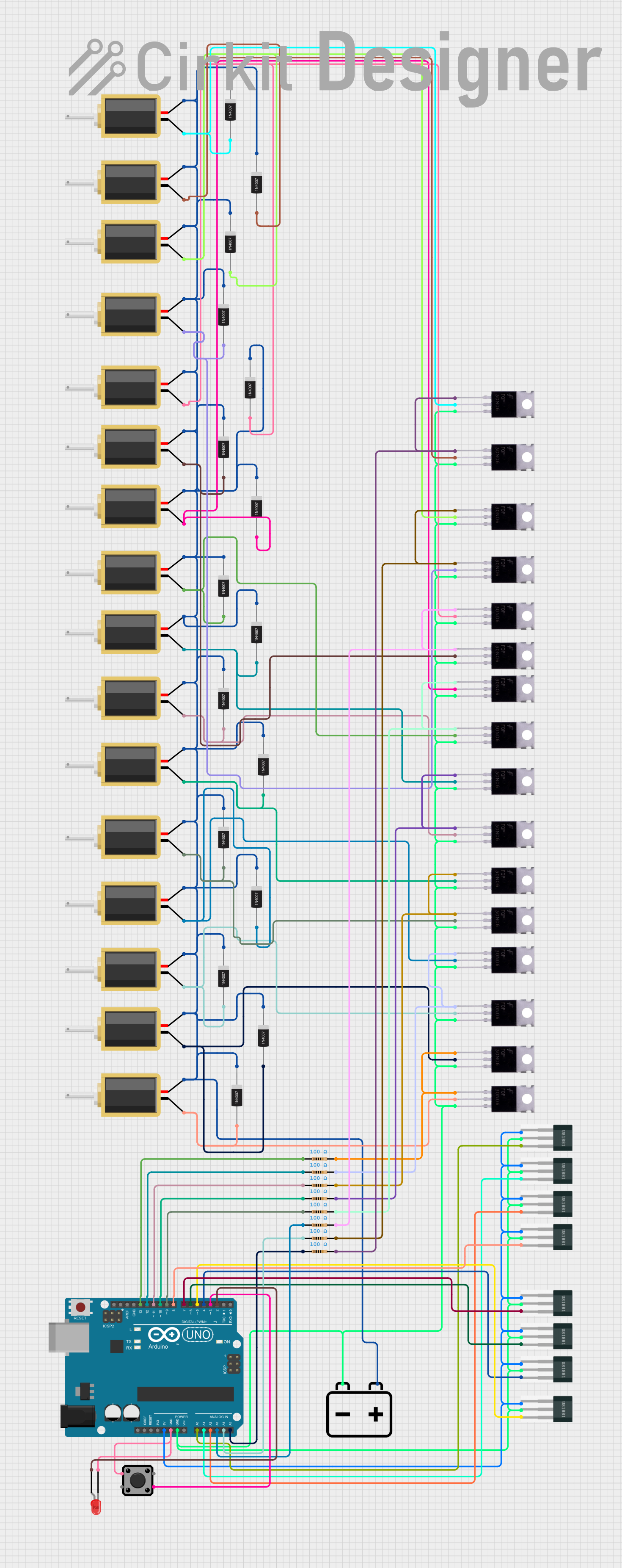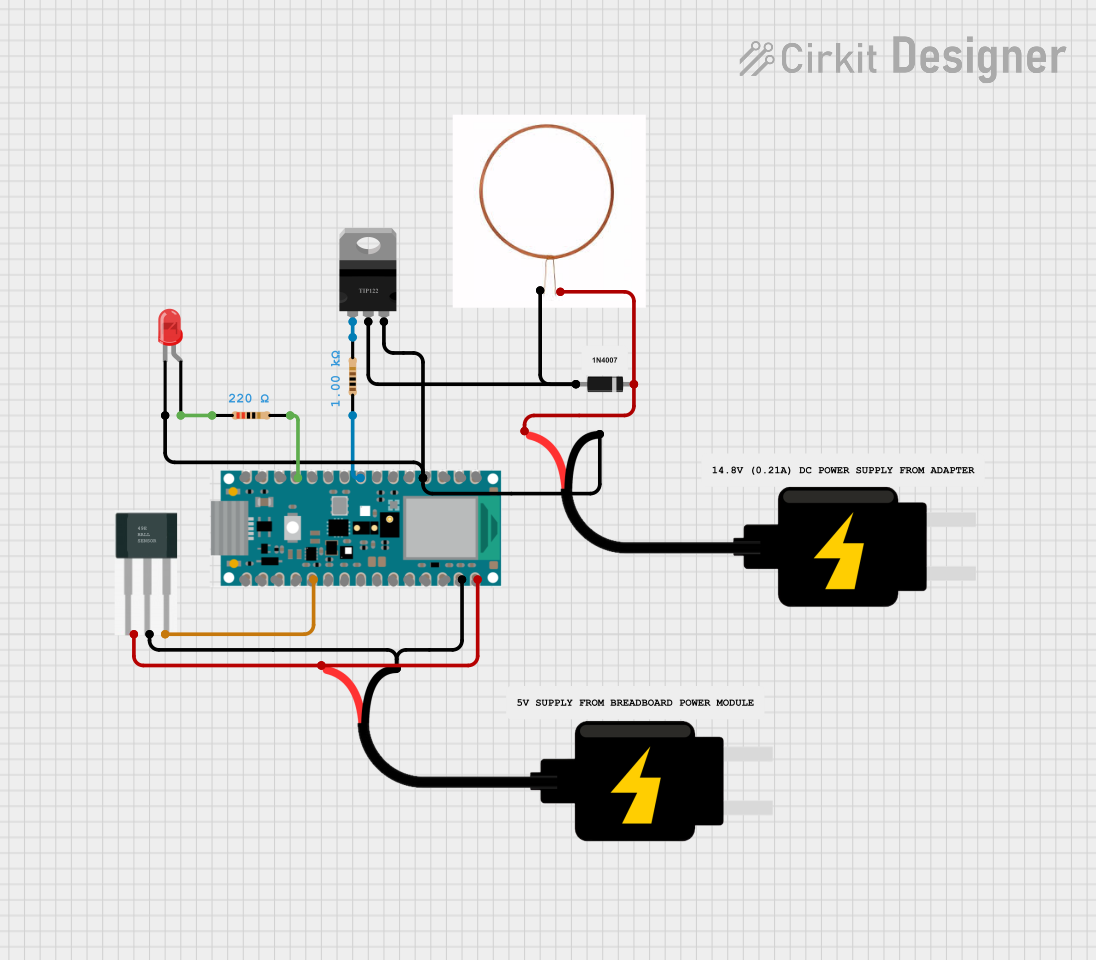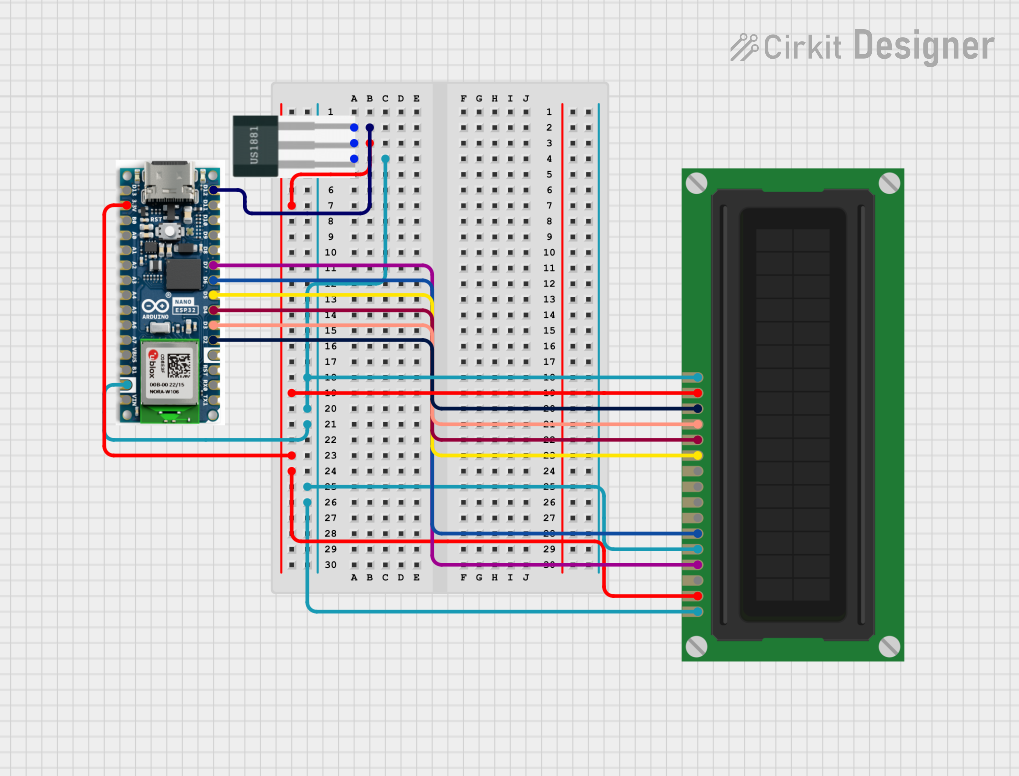
How to Use Hall Effect Sensor: Examples, Pinouts, and Specs

 Design with Hall Effect Sensor in Cirkit Designer
Design with Hall Effect Sensor in Cirkit DesignerIntroduction
The Hall Effect Sensor (Manufacturer Part ID: XC-4434) by Arduino is a device designed to detect the presence and strength of a magnetic field. It operates based on the Hall effect principle, where a voltage is generated perpendicular to the flow of current in the presence of a magnetic field. This sensor is widely used in applications requiring non-contact magnetic field detection.
Explore Projects Built with Hall Effect Sensor

 Open Project in Cirkit Designer
Open Project in Cirkit Designer
 Open Project in Cirkit Designer
Open Project in Cirkit Designer
 Open Project in Cirkit Designer
Open Project in Cirkit Designer
 Open Project in Cirkit Designer
Open Project in Cirkit DesignerExplore Projects Built with Hall Effect Sensor

 Open Project in Cirkit Designer
Open Project in Cirkit Designer
 Open Project in Cirkit Designer
Open Project in Cirkit Designer
 Open Project in Cirkit Designer
Open Project in Cirkit Designer
 Open Project in Cirkit Designer
Open Project in Cirkit DesignerCommon Applications and Use Cases
- Position sensing: Detecting the position of objects in industrial machinery.
- Speed measurement: Measuring the rotational speed of motors or wheels.
- Proximity sensing: Detecting the presence of nearby magnetic objects.
- Current sensing: Measuring current in power systems.
- Magnetic field detection: Applications in robotics, automotive systems, and consumer electronics.
Technical Specifications
The following table outlines the key technical details of the Arduino XC-4434 Hall Effect Sensor:
| Parameter | Value |
|---|---|
| Operating Voltage | 3.3V to 5V |
| Output Type | Digital (High/Low) |
| Magnetic Sensitivity | ±3.5 mT |
| Response Time | < 10 µs |
| Operating Temperature | -40°C to 85°C |
| Current Consumption | 4 mA (typical) |
| Dimensions | 18mm x 10mm x 5mm |
Pin Configuration and Descriptions
The Hall Effect Sensor XC-4434 has three pins, as described in the table below:
| Pin | Name | Description |
|---|---|---|
| 1 | VCC | Power supply pin (3.3V to 5V) |
| 2 | GND | Ground connection |
| 3 | OUT | Digital output pin (HIGH when magnetic field is detected) |
Usage Instructions
How to Use the Component in a Circuit
- Power the Sensor: Connect the VCC pin to a 3.3V or 5V power source and the GND pin to the ground.
- Connect the Output: Connect the OUT pin to a digital input pin of your microcontroller (e.g., Arduino UNO).
- Place the Magnet: Position a magnet near the sensor. The sensor will output a HIGH signal when it detects a magnetic field and a LOW signal otherwise.
Important Considerations and Best Practices
- Magnet Placement: Ensure the magnet is aligned properly with the sensor for accurate detection.
- Debouncing: If the sensor is used in a high-speed application, consider adding a debounce circuit or software logic to filter noise.
- Power Supply: Use a stable power supply to avoid erratic sensor behavior.
- Distance Sensitivity: The sensor's detection range is limited to a few millimeters. Test the range with your specific magnet.
Example Code for Arduino UNO
Below is an example code snippet to interface the Hall Effect Sensor XC-4434 with an Arduino UNO:
// Hall Effect Sensor Example Code
// This code reads the digital output of the Hall Effect Sensor and
// turns on an LED when a magnetic field is detected.
const int hallSensorPin = 2; // Connect OUT pin of the sensor to digital pin 2
const int ledPin = 13; // Built-in LED on Arduino UNO
void setup() {
pinMode(hallSensorPin, INPUT); // Set the sensor pin as input
pinMode(ledPin, OUTPUT); // Set the LED pin as output
Serial.begin(9600); // Initialize serial communication
}
void loop() {
int sensorState = digitalRead(hallSensorPin); // Read the sensor output
if (sensorState == HIGH) {
// Magnetic field detected
digitalWrite(ledPin, HIGH); // Turn on the LED
Serial.println("Magnetic field detected!");
} else {
// No magnetic field detected
digitalWrite(ledPin, LOW); // Turn off the LED
Serial.println("No magnetic field detected.");
}
delay(100); // Small delay for stability
}
Troubleshooting and FAQs
Common Issues and Solutions
Sensor Not Responding:
- Cause: Incorrect wiring or insufficient power supply.
- Solution: Double-check the connections and ensure the VCC pin is connected to a 3.3V or 5V source.
False Triggering:
- Cause: Electrical noise or interference.
- Solution: Add a capacitor (e.g., 0.1 µF) between VCC and GND to filter noise.
Inconsistent Output:
- Cause: Magnet is too far from the sensor.
- Solution: Reduce the distance between the magnet and the sensor.
Output Always LOW:
- Cause: Weak or no magnetic field.
- Solution: Use a stronger magnet or check the alignment of the magnet with the sensor.
FAQs
Q: Can this sensor detect the polarity of a magnet?
A: No, the XC-4434 Hall Effect Sensor is a unipolar sensor and only detects the presence of a magnetic field, not its polarity.
Q: Can I use this sensor with a 12V power supply?
A: No, the sensor operates within a voltage range of 3.3V to 5V. Using a higher voltage may damage the sensor.
Q: What is the maximum detection range of this sensor?
A: The detection range depends on the strength of the magnet but is typically a few millimeters.
Q: Is this sensor suitable for analog output applications?
A: No, the XC-4434 provides a digital output (HIGH/LOW) and is not designed for analog output applications.